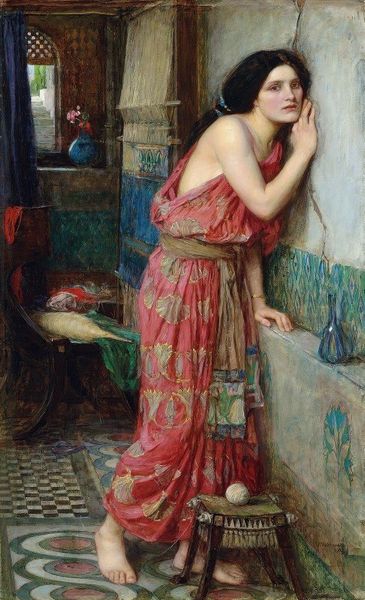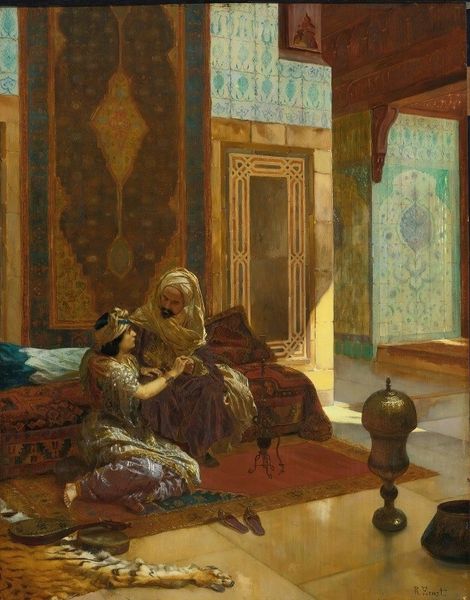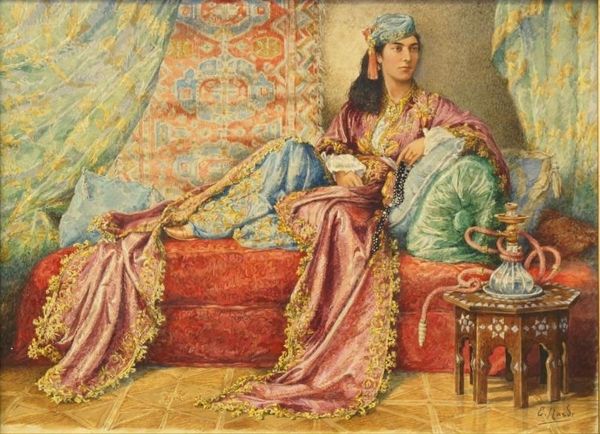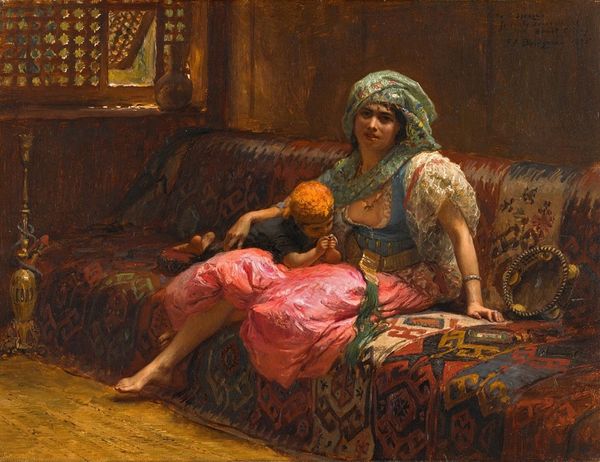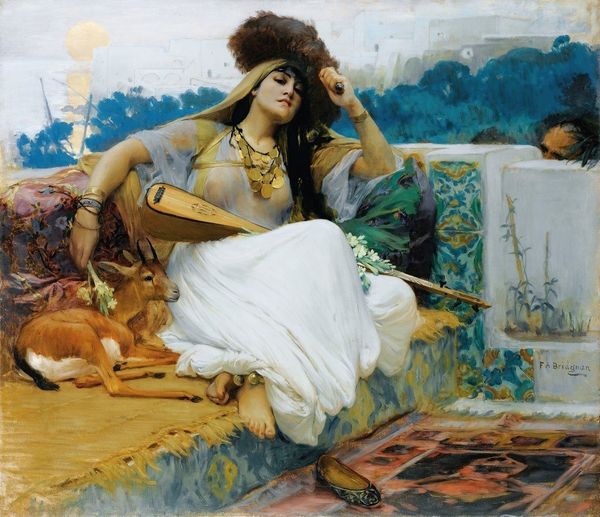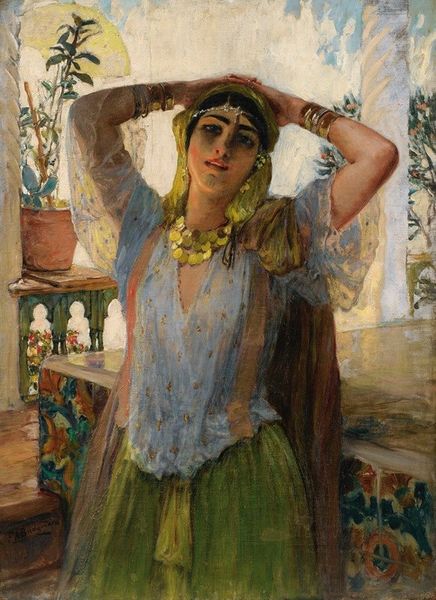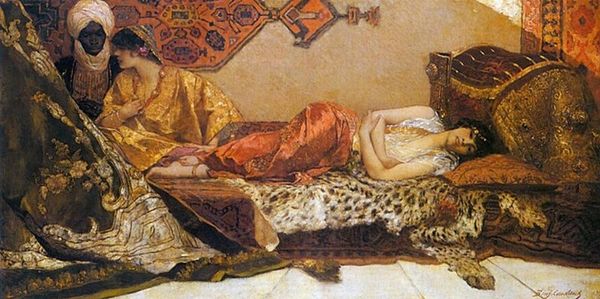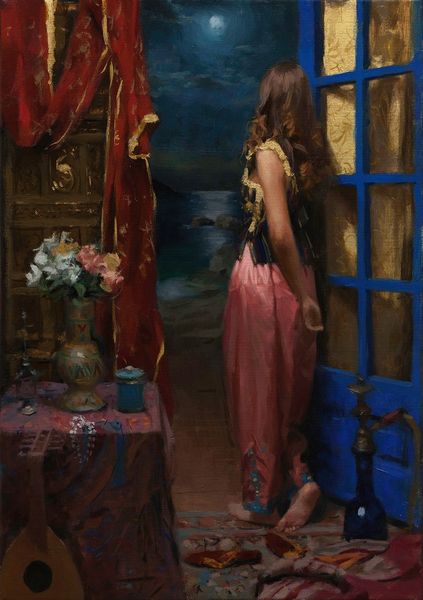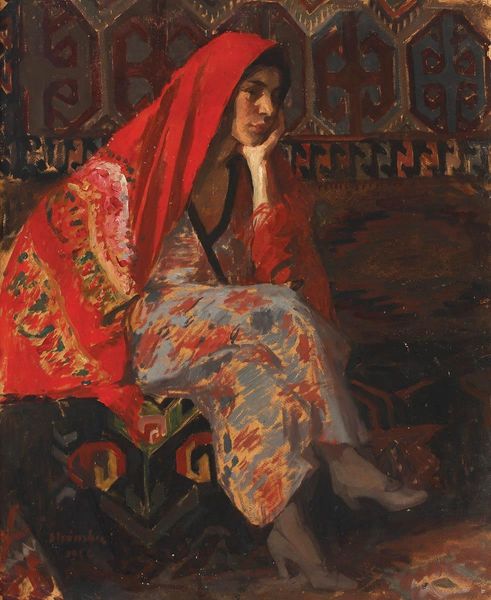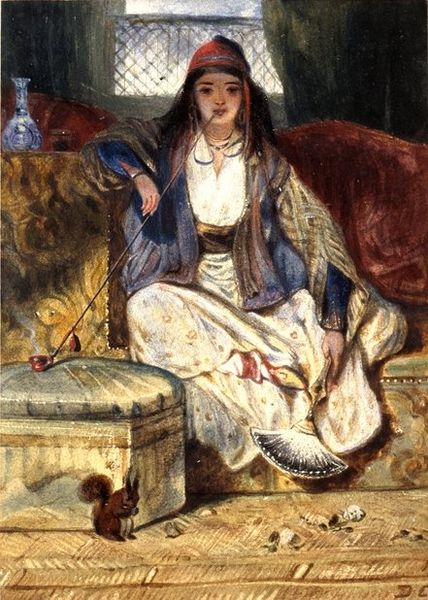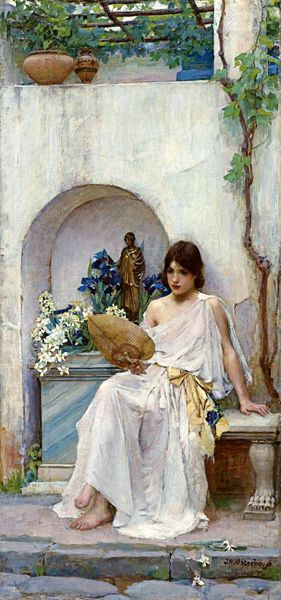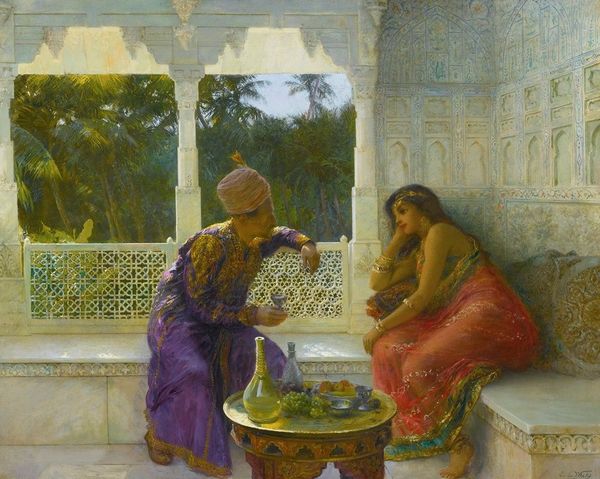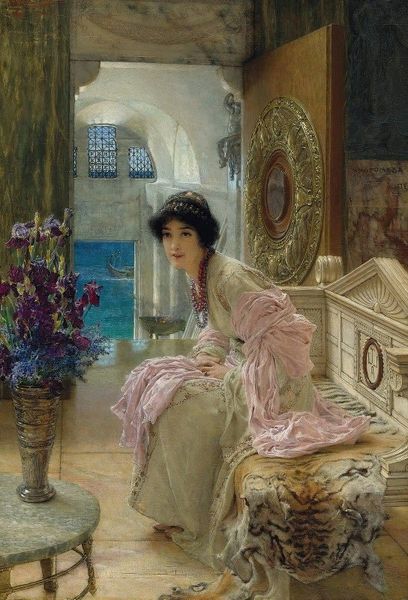
oil-paint
#
portrait
#
gouache
#
figurative
#
oil-paint
#
figuration
#
oil painting
#
intimism
#
romanticism
#
orientalism
#
genre-painting
Copyright: Public Domain: Artvee
John William Waterhouse painted this odalisque in her harem, adorned with potent symbols of orientalism, during the late 19th century. The most striking motif is the golden bowl at the odalisque’s side, which holds dual meanings. It is a symbol of cleansing, of ritual purification, reminiscent of ancient ablution practices. Simultaneously, its golden hue and placement suggest wealth and luxury, reflecting the exotic opulence Westerners associated with the Orient. The act of foot-washing is a motif recurring from the Bible to the Quran, symbolizing hospitality, servitude, and spiritual cleansing. Over time, this symbol has been secularized in domestic contexts and re-sexualized in artworks, taking on new layers of meaning influenced by power dynamics. The odalisque bathing could trigger deep-seated psychological responses from viewers, tapping into primal desires, societal norms, and the allure of the exotic "other." This symbol invites a complex interplay of cultural, religious, and sensual associations, engaging viewers on a visceral level. Thus, this emblem in Waterhouse's painting serves as a palimpsest, its meanings accumulating and evolving, reflecting the cyclical nature of cultural memory.
Comments
No comments
Be the first to comment and join the conversation on the ultimate creative platform.
